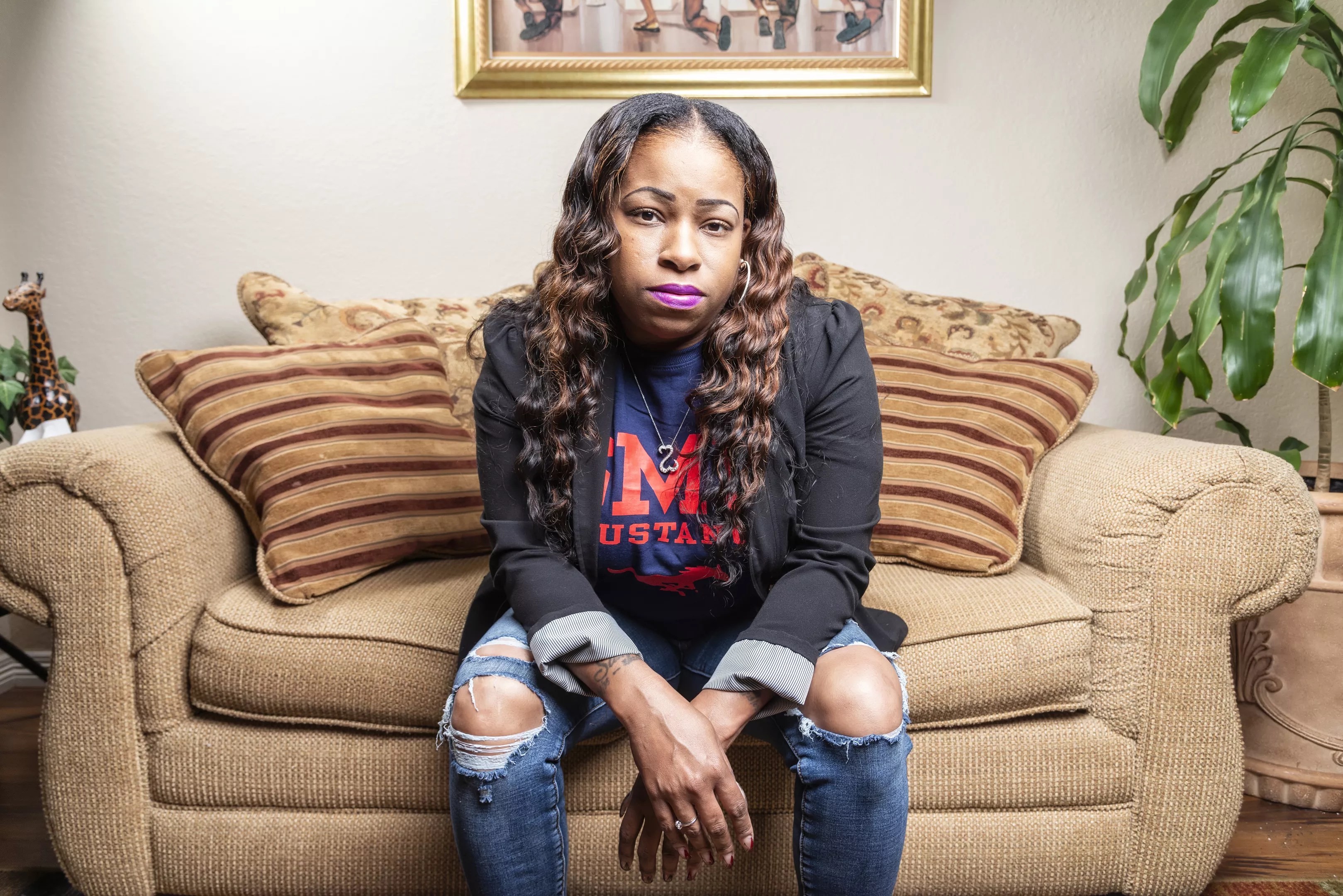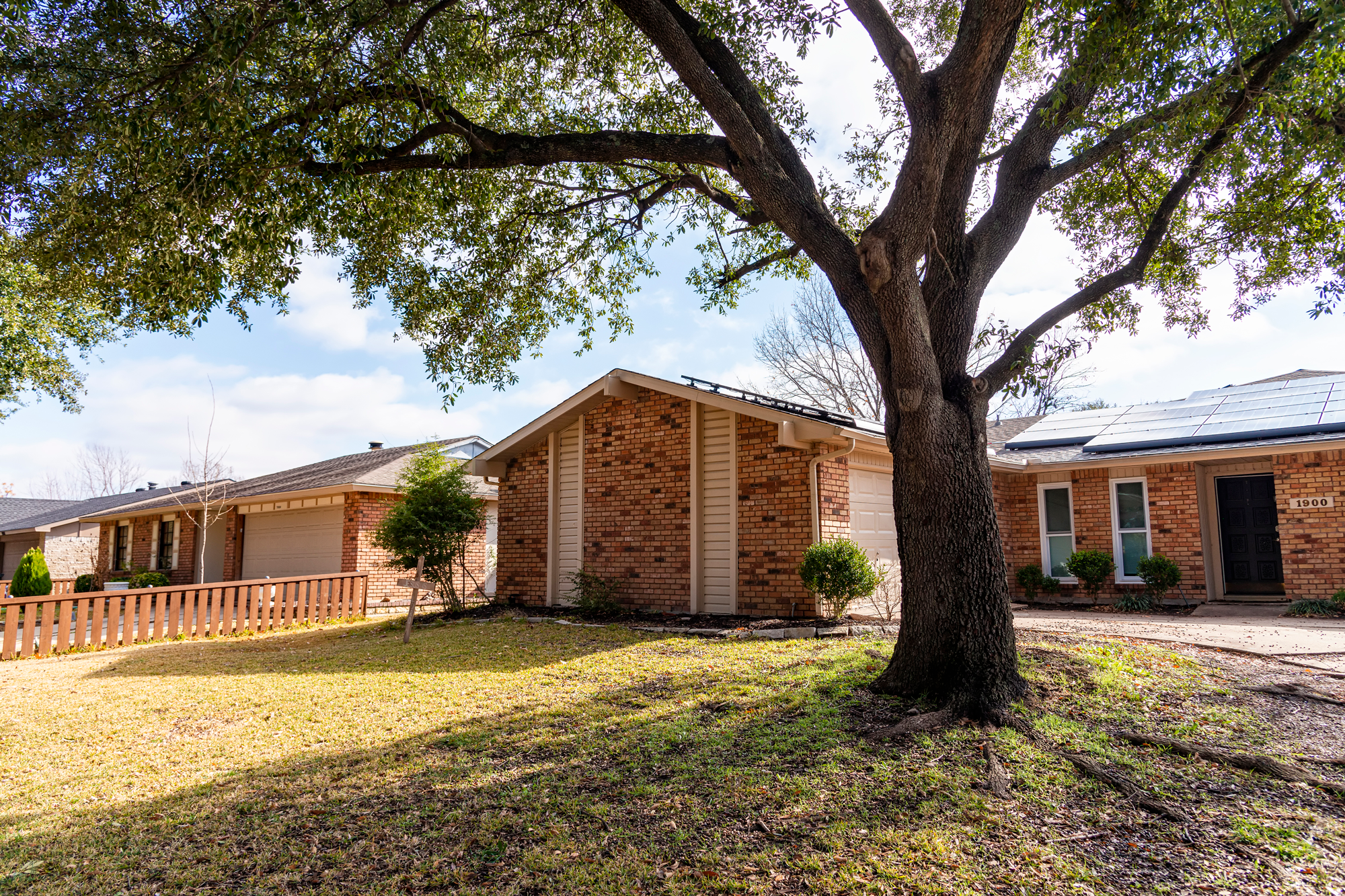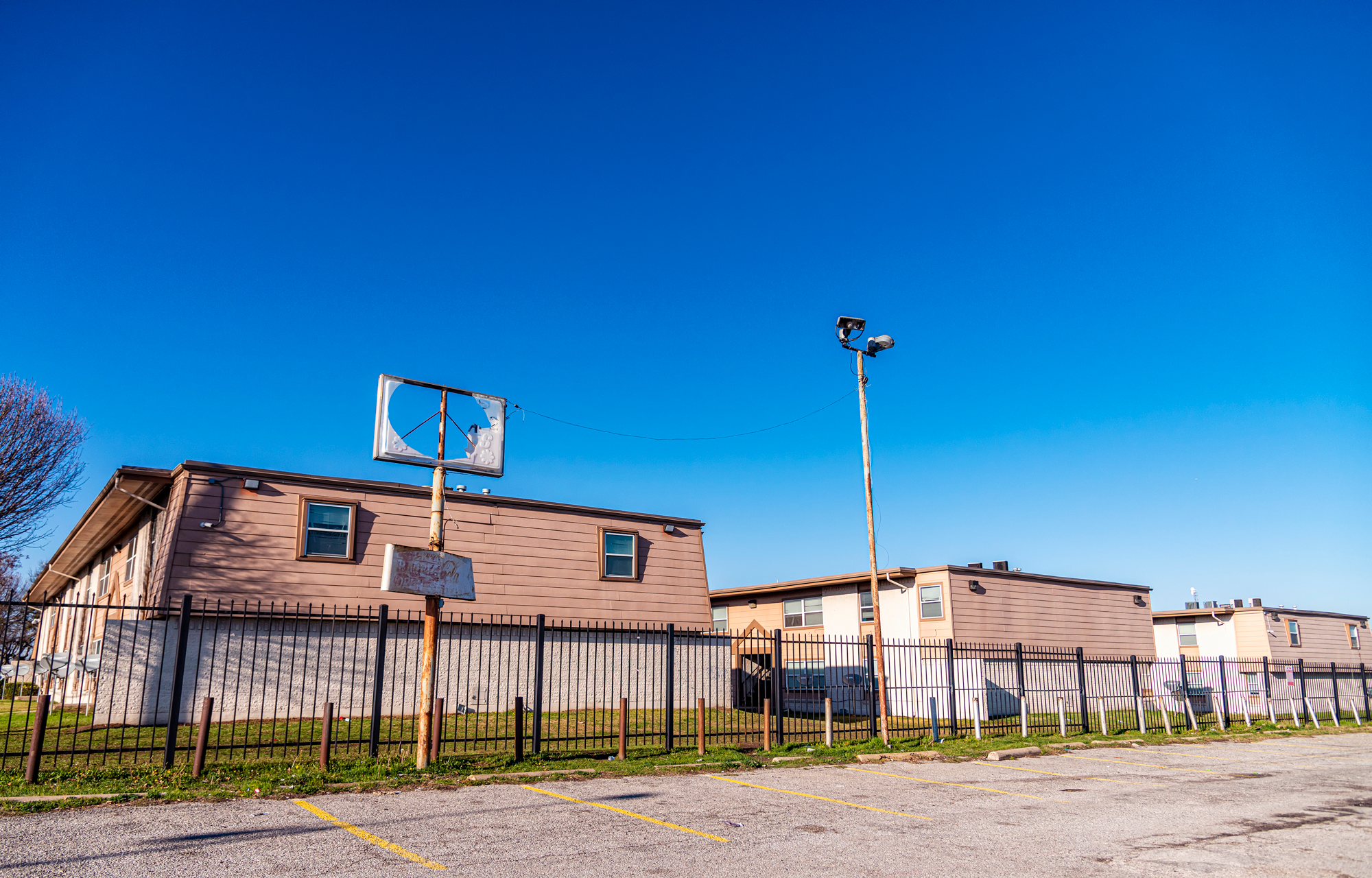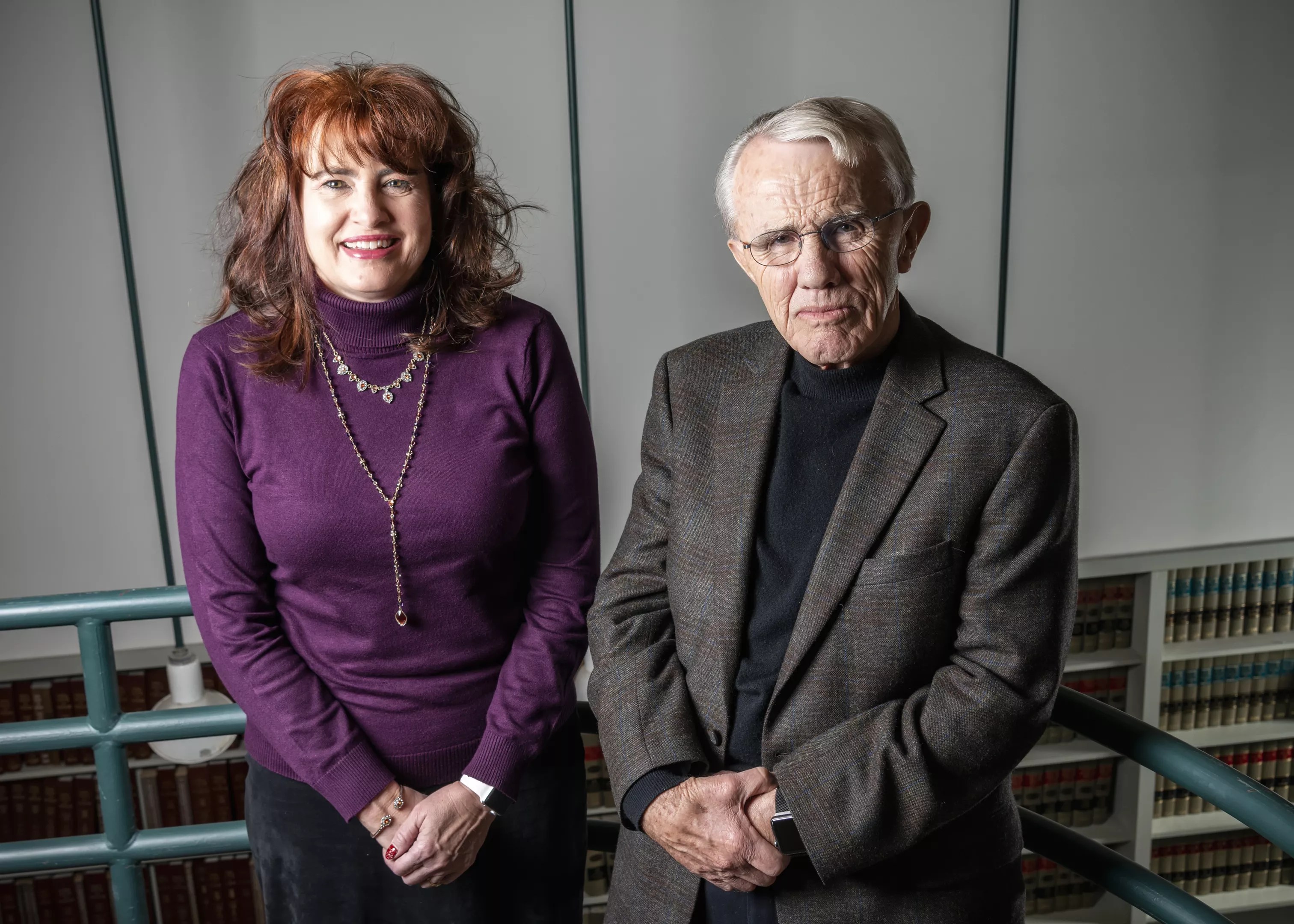
Danny Fulgencio

Audio By Carbonatix
When Donna Pryor walked into her new three-bedroom home on a tree-lined street in Plano, she was mesmerized. There was a clean yard, a huge kitchen and a swimming pool out back. Finally, her children would be safe.
Pryor left home when she was 13 to escape her drug-addicted mother. Pregnant with her first child, Pryor moved in with her cousin. For years, she survived on food stamps and, once she turned 18, dancing in clubs.
Then, in 2010, Pryor escaped north to the suburbs with the help of a housing voucher and a special program that provided a caseworker and covered moving costs. She now has a steady job at a domestic violence shelter and is studying to become a social worker. The move, she says, changed her life.
Pryor’s story is rare. Voucher recipients in major cities across the nation are most often concentrated in high-poverty ZIP codes, caught in a cycle of poverty. But Pryor’s experience is becoming more common in Dallas, which has one of the nation’s oldest mobility assistance programs, one that helped Pryor and many other families move out of high-poverty neighborhoods.
That program, thanks to another twist in a decades-old court case, just got a boost, and because of recent research that has shown that programs like Dallas’ are effective, the U.S. Department of Housing and Urban Development is preparing to expand them nationwide.
First Step: Sue
Pryor’s escape to Plano was possible because in 1985, seven black mothers linked up with a pair of civil rights lawyers – Elizabeth Julian and Michael Daniel – to sue nine Dallas suburbs for refusing to accept Section 8 housing vouchers issued under a federal program to help cover the rent for people like Pryor. The suburbs quickly capitulated, but Julian and Daniel weren’t done. They expanded the suit to include Dallas’ housing authority and HUD, which oversees the Section 8 program, accusing them of using housing assistance programs to reinforce segregation.
A federal judge agreed, writing in a 1989 ruling that “the primary purpose of DHA’s public housing program was to prevent blacks from moving into white areas of this city.” The ruling paved the way for a series of settlements.
DHA – once called the Dallas Housing Authority, the agency oversees public housing in Dallas and surrounding counties – agreed to tear down some of its worst public housing projects. HUD offered to give Dallas more vouchers. The city was pulled in too and spent more than $100 million to extricate itself.
The housing agency also promised to run a mobility assistance program as restitution to the black families who had been trapped in poor neighborhoods. It was based on a similar program created a decade earlier in Chicago, also the result of a court desegregation order.
Things didn’t go as planned. DHA had little interest in the program. Almost immediately, it understaffed it. In 1989, a judge found out it did little more than provide bus tours for prospective tenants. By 1995, DHA was outright refusing to run the program at all.
“The specter of this horde of poor African American families coming out there and ‘destroying’ property values and ruining the school system and bringing crime with them. That was the fear.” — Craig Flournoy
So the lawyers kept filing motions, and judges kept ordering DHA and the city to follow through on their promises. So far, the case has gone through 10 district court decisions and 17 appeals.
Part of the problem was political pressure. At the time, white suburbanites objected to the idea of rubbing shoulders with black families. “It was the specter of this horde of poor African American families coming out there and ‘destroying’ property values and ruining the school system and bringing crime with them. That was the fear,” says Craig Flournoy, a former Dallas Morning News reporter who covered hearings over the proposals to develop new low-income housing in white neighborhoods.
Opposition came from all sides. A Dallas housing activist called the plan to demolish housing projects and relocate residents “institutional displacement of the poor.” The Rev. Ralph Abernathy, a mentor to Martin Luther King Jr., marched through the streets of a massive West Dallas housing project scheduled for demolition and proclaimed, “We will not be moved.”
Even now, many black families eligible for the mobility program turn it down. Pryor said she’s spoken to several women who, despite being offered incentives, prefer to find housing close to home. “A lot of them are poor and don’t have adequate transportation to move so far out. And when they do, they’re stuck,” she says.
Then there’s the inevitable racism black families face when moving to white neighborhoods. Pryor recalls her daughter coming home from school one day saying she’d been called the N-word.
Still, Pryor doesn’t think it’s any worse than if she’d stayed in southern Dallas. “As an African American, I experience prejudices everywhere I go,” she said. Upon arriving in Plano, she’d walk down the street meeting her neighbors.

The house in Plano that Pryor moved into with her hard-won voucher.
Danny Fulgencio
High Hurdles
Demetria McCain, the president of the nonprofit that helped Pryor move, says the reason more black women like Pryor don’t make the move to Plano is that they often aren’t given the choice.
Researchers at the progressive think tank Center for Budget and Policy Priorities found plenty of affordable housing available in “high opportunity” neighborhoods around Dallas, but voucher holders don’t live there.
A big reason is that many landlords, particularly in hot housing markets, refuse to rent to voucher holders despite the promise of reliable rent payments from the government. They cite a byzantine inspection process that can drag on for weeks or even months. In Dallas, it is still paper-based, leaving tenants and landlords literally running back and forth to meet deadlines. If a voucher isn’t used quickly enough, it expires and is given to the next person in line.
“Experience shows that searching for housing with vouchers is time-consuming and frustrating.” — Urban Institute
Many landlords decide it’s not worth the trouble, especially in Texas, where the Legislature has stymied protections for low-income renters. In 2018, the Urban Institute hired testers to go apartment hunting in Fort Worth and four other major cities. In some places, when testers offered to use a voucher to secure the apartment, the results were staggering. Landlords in low-poverty areas of Fort Worth denied vouchers 85% of the time, the highest rate out of the five.
“Their experience shows that searching for housing with vouchers is time-consuming and frustrating,” the researchers wrote in their report. A housing authority official told NPR in 2017 that more than half of the agency’s vouchers go unused.
In many places, renters are protected by “source-of-income discrimination” laws. These prevent landlords from rejecting a rental application because the applicant is using a voucher. Around half of voucher holders are protected, according to an analysis by the Poverty & Race Research Action Council, but not in Texas. After Austin passed such an ordinance in 2014, the state overturned it.
As a result, caseworkers have resorted to giving landlords incentive bonuses to rent to their clients. “We try to coax landlords into taking a chance on the program,” McCain says.
Pryor said she hasn’t had any trouble persuading landlords to rent to her. She tells them: “I’m a young lady. I’m African American, but I have goals. I’m going to college, and have things I’m working toward. I’m trying to make a life for me and my children.”
But for a long time, she struggled. In her early 20s, she thought she’d caught a break when she moved into a two-bedroom apartment at Estell Village, a public housing complex near Paul Quinn College. But the neighborhood – a crime hot spot, according to police – took a toll. Once, as she, her cousin and their six children pulled up in front of her front door, another car came up behind them and began shooting at a crowd hanging out on a nearby stoop. Pryor and her kids huddled on the floor until the men sped off.
“That was the moment when I was like, ‘I gotta move,'” she said. She took her kids back to her cousin’s and put her name on a wait list for a voucher.
She would wait nearly a decade. Nearly 40,000 families are on the housing authority’s wait list, double the number of vouchers the agency currently administers. They’re nearly all like Pryor – desperately poor and black.
By the time Pryor got to the front of the line, it was too late for her two oldest children, who had already dropped out of high school. But when a case manager offered to help her move to Plano, she thought of her three youngest children, her son not yet in preschool. She said yes.
After signing the lease agreement on the Plano house, Pryor got to work. She signed her kids up for swim lessons and enrolled them in local schools. The elementary school her youngest daughter would attend was right around the corner.
For her, that new school was a breath of fresh air. Hailey, which isn’t her real name – Pryor fears the stigma of government assistance – developed a connection with her third-grade teacher, whom Hailey still recalls fondly more than a decade later. There was some culture shock at first, but she quickly made friends. She joined Plano’s talented and gifted program and took a robotics class, which she found, to her surprise, that she actually liked.
Pryor is now 44 and says that she wouldn’t have been able to complete college if it weren’t for the voucher, which ended up paying all of her rent when she wasn’t working. More important, she says, “I don’t have to worry about my daughter being attacked while she’s out hanging out with her friends.”
Hailey is now a senior at Plano East High School. There, Asian kids outnumber black kids 3 to 1 and administrators proudly tout a “Blue Ribbon for Excellence” from the federal education department.
She’s a solid B student and will be the first of her siblings to graduate high school. She credits her success to her mother’s decision to move to Plano. In urban areas, she says, drugs and gangs were cooler than robotics and science, but not in Plano. There, Hailey said, “Kids can be more open, more into learning. Because I know I was. I still am.”

Estell Village, a public housing complex in South Dallas, where Pryor lived before the voucher.
Danny Fulgencio
Timing Is Everything
Researchers have long theorized that there are many Haileys out there: kids who have grown up and succeeded thanks to the mobility assistance programs. But for a long time, they had trouble proving it. When tested, the theory that living in a better neighborhood would lead to better life outcomes wasn’t holding up.
Spurred on by the success of Chicago’s mobility program, which by the turn of the century had helped nearly 25,000 families move out of inner-city housing projects, HUD spent $70 million dollars in the 1990s to run a randomized, controlled trial in five cities across the country. Some were given special vouchers that had to be used in neighborhoods where the poverty rate was below 10%, and they received counseling to help with the move.
“Children whose families take up an experimental voucher to move to a lower-poverty area when they are less than 13 years old have an annual income that is $3,477 (31%) higher on average.” — Harvard researchers
The results were disheartening. People in the experimental group were healthier, but they weren’t making more money, and their kids weren’t doing better in school. On some measures, young boys seemed to do worse. “Housing mobility by itself does not appear to be an effective antipoverty strategy,” wrote one researcher in 2007.
This was surprising. Researchers had been cataloging the positive effects of living in low-poverty neighborhoods for decades. In 2015, they found out why HUD’s experiment found different results: The original study was premature.
Harvard economists returned to the data generated in the original study, this time focusing on the grown-up children of the relocated families. Using IRS data, they showed that these kids were doing significantly better than their counterparts who had stayed put. They were going to college at a higher rate and earning more, too.
The difference was time. HUD’s experimental program, called Moving to Opportunity, had little effect on economic outcomes for adults and older youths. The Harvard team found that for young children, however, the longer they lived in low-poverty neighborhoods, the better they fared in later life.
“The treatment effects are substantial: children whose families take up an experimental voucher to move to a lower-poverty area when they are less than 13 years old have an annual income that is $3,477 (31%) higher on average relative to a mean of $11,270 in the control group in their mid-twenties,” researchers Raj Chetty, Nathaniel Hendren and Lawrence F. Katz wrote. “In contrast, the same moves have, if anything, negative long-term impacts on children who are more than 13 years old when their families move, perhaps because of the disruption effects of moving to a very different environment. The gains from moving fall with the age when children move, consistent with recent evidence that the duration of exposure to a better environment during childhood is a key determinant of an individual’s long-term outcomes.”
A further study based on an experiment in Seattle found that providing extra assistance and education to landlords and tenants dramatically increased tenants’ use of mobility vouchers.

Civil rights lawyers Laura Beshara and Michael Daniel handle housing desegregation in Dallas.
Danny Fulgencio
Finally, there was evidence that mobility assistance programs worked. The economists concluded that the programs could “ultimately generate positive returns for taxpayers,” canceling out the higher cost of the vouchers, which was exciting news to lawmakers. The House voted overwhelmingly to launch a pilot in 2019 and Congress finally threw in $50 million to fund it. HUD is expected to release guidelines outlining how the program will work in the coming months. Ending the cycle of poverty turns out to be one of the vanishingly few issues Democrats and Republicans can agree on.
The economists created a center at Harvard to convert the research into policy. Its associate director of policy, Sarah Oppenheimer, thinks that the recent research has “reinvigorated” housing authorities across the country and caused them to pay closer attention to how their policies might be furthering segregation.
These agencies are starting to see themselves less as landlords and more as “social impact agencies,” she says; housing authorities are using Dallas and Chicago as inspiration when developing their own programs.
Dallas’ program has long been run by the Inclusive Communities Project, created in 1990 out of the pool of city money set aside as part of the segregation lawsuit. Both Julian and Flournoy sit on its board. The organization does advocacy work; it’s sued both HUD and the state over housing policy. But ICP prides itself on its mobility assistance program, which it took over in 2005 after the DHA refused to continue running it.
New voucher recipients attend a presentation given by an ICP staff member explaining the details of the program. If they’re willing to move to a low-poverty neighborhood, ICP will cover their security deposits and assign caseworkers to help them find a suitable apartment. The caseworker helps in the apartment hunt and then acts as a go-between, facilitating the often-fraught relationship between the tenant, the landlord and the housing authority.
In Dallas, ICP has another tool: a special type of voucher that pays higher rents for black families willing to move to low-poverty areas. This is also thanks to the litigation. When building new public housing in white neighborhoods proved politically unfeasible, HUD agreed in 2001 to issue 3,200 special vouchers as an alternative. DHA would throw in $3 million to pay for security deposits, moving expenses and bonuses for landlords.
But the settlements were “hotly contested,” according to Laura Beshara, another civil rights lawyer who joined Daniel on the case.
By 2018, she and Daniel became suspicious that many of the vouchers and much of the money had disappeared. It turned out that 1,000 vouchers were unaccounted for and most of the mobility funding was unspent.
So everyone went back to court, again, which resulted in the newest compromise: DHA will spend down the $3 million fund by reaching out to black voucher holders within Dallas’ poorest neighborhoods. Focusing outreach efforts on areas of concentrated poverty was DHA’s idea, which Beshara called a “big deal.”
“The housing authority has never done that before,” she said.
Troy Broussard, DHA’s president, is also enthusiastic. “It’s a huge win for our families that we serve and it’s a huge win for us administratively,” he said, undoubtedly imagining a future when the agency no longer has to submit to legal oversight.
Although the DHA has claimed in legal filings that it is “nothing like the DHA of the past,” it still has a long way to go to heal the wounds inflicted by the city’s history of segregation. The seven ZIP codes in the Dallas area with the most voucher families all have poverty rates over 20%, according to the most recent data available from HUD. They’re clustered in historically black neighborhoods in southern and eastern Dallas.
Which means more work for Daniel and Beshara.
“We keep fighting,” Beshara said. “That’s what we do. We’re not going to stop.”